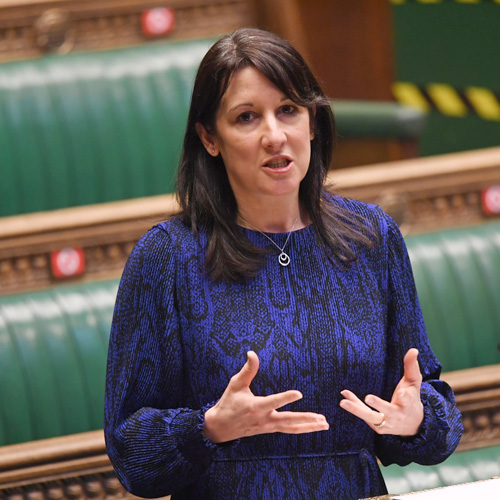The key points:
- The UK’s economic growth forecast for 2025 has been revised downward to 1 percent, with projections for moderate acceleration in subsequent years.
- Inflation is expected to peak at approximately 3.8 percent by mid-2025 before gradually falling toward the Bank of England’s target of 2 percent by 2027.
- Real Household Disposable Income is forecast to grow more robustly, with households projected to be roughly £500 better off annually.
- Fiscal stability remains a priority, with public borrowing set to decline from 4.8 percent of GDP in 2024-25 to 2.1 percent by 2029-30 and an anticipated budget surplus in the longer term.
- Welfare reforms include a £4.8 billion reduction in the welfare budget, with the Universal Credit health element being cut by 50 percent for new claimants and frozen until 2030, while the standard allowance increases from £92 to £106 per week by 2029-30.
- A £3.25 billion Transformation Fund has been established to modernise public services through enhanced digital technology and AI-driven efficiencies.
- Defence spending will receive an immediate boost of £2.2 billion, with a long-term target of raising NATO-qualifying defence expenditure to 2.5 percent of GDP by 2027 through investments in advanced technologies and updated procurement practices.
- Significant investments in housing and infrastructure are planned, including a £13 billion capital infrastructure package, a £2 billion allocation for social and affordable housing in 2026-27, and a £625 million construction skills initiative to train 60,000 workers.
- A £1 billion commitment to personalised employment support aims to help more people re-enter the workforce, potentially reducing welfare outlays by £3.4 billion.
- Measures to improve tax compliance intend to raise an extra £1 billion by targeting tax evasion, despite no new tax increases being announced.
Overall a continued cautious economic growth outlook by Chancellor Rachel Reeves in her first Spring Statement, which the jeering opposition repeatedly termed 'an emergency mini budget'.
The Office for Budget Responsibility (OBR) has adjusted the UK’s 2025 growth forecast downward to 1 percent, marking a significant step back from earlier projections of 2 percent. This adjustment reflects the sustained impact of external economic headwinds (war and trade issues) as well as continued domestic challenges.
Despite the short-term contraction, the government remains optimistic about a gradual recovery, with growth expected to improve incrementally to 1.9 percent by 2026 and roughly stabilise around 1.8 percent in subsequent years.
Labour anticipates that inflation will reach a peak of 3.8 percent in the middle of this year (2025) - putting a leash on any further rate cuts this year probably. Inflation is projected to gradually decline, moving toward the Bank of England’s target of 2 percent by 2027 - but hitting 2.1 percent next year.
Real Household Disposable Income is projected to see a more rapid improvement than previously forecast, with government estimates suggesting that average households will be approximately £500 better off annually. this expectation is anchored in multiple policy initiatives that aim to bolster wage growth and streamline benefits.
Government borrowing, which stood at 4.8 percent of GDP in 2024-25, will be reduced to an estimated 2.1 percent of GDP by 2029-30. Long-term, a budget surplus of £9.9 billion for 2029-30 is forecast.
The most far-reaching reforms announced in the Spring Statement are those targeting the welfare budget. The government has introduced a £4.8 billion cut to the welfare budget by reforming Universal Credit.
The health element of Universal Credit will face a 50 percent cut for new claimants, with this rate frozen until 2030. It comes alongside a more modest increase in the standard allowance, from £92 per week in 2025-26 to £106 per week by 2029-30.
To modernise public services, a £3.25 billion Transformation Fund was announced. This fund is earmarked for investing in digital technologies and artificial intelligence to drive efficiencies across public sectors such as justice and social care. One of the envisioned projects involves the integration of AI-driven systems in the Ministry of Justice, which is expected to streamline case management processes and reduce administrative backlogs.
The Spring Statement underscored an intensified commitment to defence. An immediate boost of £2.2 billion in defence spending, reflecting the changes to the strategic changes on a global defence stage, raising NATO-qualifying defence spending to 2.5 percent of GDP by 2027. At home this investment will be felt in companies/industries producing things like drones and AI-enhanced surveillance systems.
Housing and infrastructure will see a £13 billion capital package over the next five years, designed to enhance transport, energy infrastructure, and digital connectivity. A commitment to building 1.5 million homes in England by the end of the current Parliament. Planning reforms aimed at streamlining the National Planning Policy Framework joined by an additional £2 billion allocated specifically for social and affordable housing in 2026-27. Companies in this sector needing a skilled workforce will see a £625 million construction skills initiative to train up to 60,000 workers and the establishment of several new technical colleges.
For employment Labour has earmarked £1 billion for personalised employment support programs to help more people return to work and alleviate long-term dependency on welfare. An anticipated saving of £3.4 billion over the coming years.
No new tax increases were introduced, but the government is trying to raise an additional £1 billion through enhanced measures to combat tax evasion. Reeves stating a committment to fairness and accountability in the tax system.
Critics accuse Labour of relying on fiscal austerity measures that could hinder the short-term recovery. Cuts to welfare, combined with downgraded growth forecasts, risk exacerbating economic hardship for some segments of the population.
Despite increased funding in key areas such as defence and public service modernisation, other sectors may experience austerity-style constraints.
Reducing overseas aid will draw the ire of humanitarian organisations on the grounds of the UK’s commitments to international development.


